After the so recent flooding in the Houston, Spring, The Woodlands, and so many other areas we are now in the process restoring our lives. The many neighbors and friends we have in The Woodlands are now in the process of rebuilding. Where do we all start?
Is it safe to turn my AC unit on after being flooded? DO NOT OPERATE IF WATER IS IN THE UNIT!!!!!
The answer depends on the amount of water that went into the AC unit. GET THE UNIT LOOKED AT BY A LICENSED CONTRACTOR. Most electrical components are up high in the outdoor unit, also called condensing unit. There are three major components in the unit: The compressor that sits low, the fan motor that is usually high in the unit, condenser coil which the louvered panel protects, and then miscellaneous electrical components.
THE COMPRESSOR: Do not run the unit if water is still present. There is a potential to short circuit the unit. Give the unit time to dry. There will always be the potential of the electrical connections rusting which will lead to poor connection.
OUTDOOR FAN MOTOR: Again do not operate if water present. This motor needs to dry before using. Operation of a wet motor will burn it up. The motor has sealed bearings which could have gotten wet. Chances are, if the outdoor fan motor was in water it will eventually fail.
OUTDOOR COIL: This coil is normally hidden from view and can get restricted with debris. Leaves, dirt or anything else can get into it. It will need cleaning to obtain performance. PLEASE, IF YOU AS A HOMEOWNER WANT TO CLEAN IT BE CAREFUL OF SNAKES THAT COULD BE INSIDE IT. ELECTRICITY IS DEADLY SO IT’S RECOMMENDED THAT AN AC CONTRACTOR PERFORM THE TASK.
ELECTRICAL COMPONENTS: There are several parts such as contactors, capacitors, and relays that can also burn out or short circuit. All electrical connection can possibly oxidize or rust. All these components should be dried before operation. Capacitors will sometimes hold water causing them to short out. Contactors will get debris in them causing them to short out or stick. This will cause AC not to work or possibly cause the compressor to stay permanently on, causing indoor coil to ice over or damage the compressor.
Water removal and the drying process: AS SOON AS POSSIBLE
The first and most important thing is to get the water out of the home by any means. Anything that got wet remove it from the home. Sheetrock acts as a giant sponge retaining water and spreading it. What ever the amount of water, you need to cut sheetrock to that point so what remains is dry. Remove and dispose of all old sheetrock and wet insulation. Wet furniture, clothes, and furniture all need to be removed to aid in drying. Fans will help dry the home, dehumidifiers work but are usually too small, operating the AC helps, and even running the furnace will help. THE MAIN THING IS GET THE HOUSE DRIED BEFORE MORE SERIOUS DAMAGE IS DONE.
Here are some links that we thought may be helpful if your house was flooded:
This has tips from the Houston Chron including a link to a FEMA inventory sheet:
This one has what to do in the first 24 hours to get the most out of your insurance:

